Queen Elizabeth II’s 70 years on the throne were not only characterized by her impressive reign and emphatic diplomacy. The monarch’s fashion over the years has consistently favored royal chic over couture, with an impressive post-coronation wardrobe that showed the deep understanding she had of her role as leader of her country – leaving us with a sartorial legacy that ranks as a of the most iconic in the world.
Like her public life, the Queen’s clothing was a visible manifestation of her intense role as British monarch. Hazel Clark, a professor of Design Studies and Fashion Studies at Parsons School of Design believes that the queen’s clothing choices referred to her personal style as opposed to following fashion trends.
“I would rather describe the Queen’s clothing choices as ‘not fashionable,’ but with a very strong sense of style, which she has developed and refined throughout her life,” Clark said. “I think that it has also helped communicate her status as a world leader: In other words, that sense of consistency in her appearance creates a sense of confidence and continuity.”
In her early years as a princess, Elizabeth favored clean, sleek silhouettes with a cinched waist, a style that reflected the times, especially for war-torn and post-war England.
Princess Elizabeth 1947; 1949; 1948
Getty Images (4)
Elizabeth showed her sensitivity to the challenges her country was facing during this time when she married Philip Mountbatten, Duke of Edinburgh, in 1947. The war had ended two years before she tied the knot and the then-Princess used Ration Coupons she had saved to buy tulle, chiffon and silk for her Norman Hartnell-designed regal gown, embellished with pearls. (She was also generously given 200 extra ration coupons in addition to those saved for the royal wedding.)
READ MORE: The 12 most influential British royal wedding dresses of all time
Six years later, Elizabeth turned to Hartnell again for her coronation dress, a white duchess satin gown embroidered with national and Commonwealth floral emblems in gold and silver thread and embellished with seed pearls, which she wore them to be crowned Queen of England. .
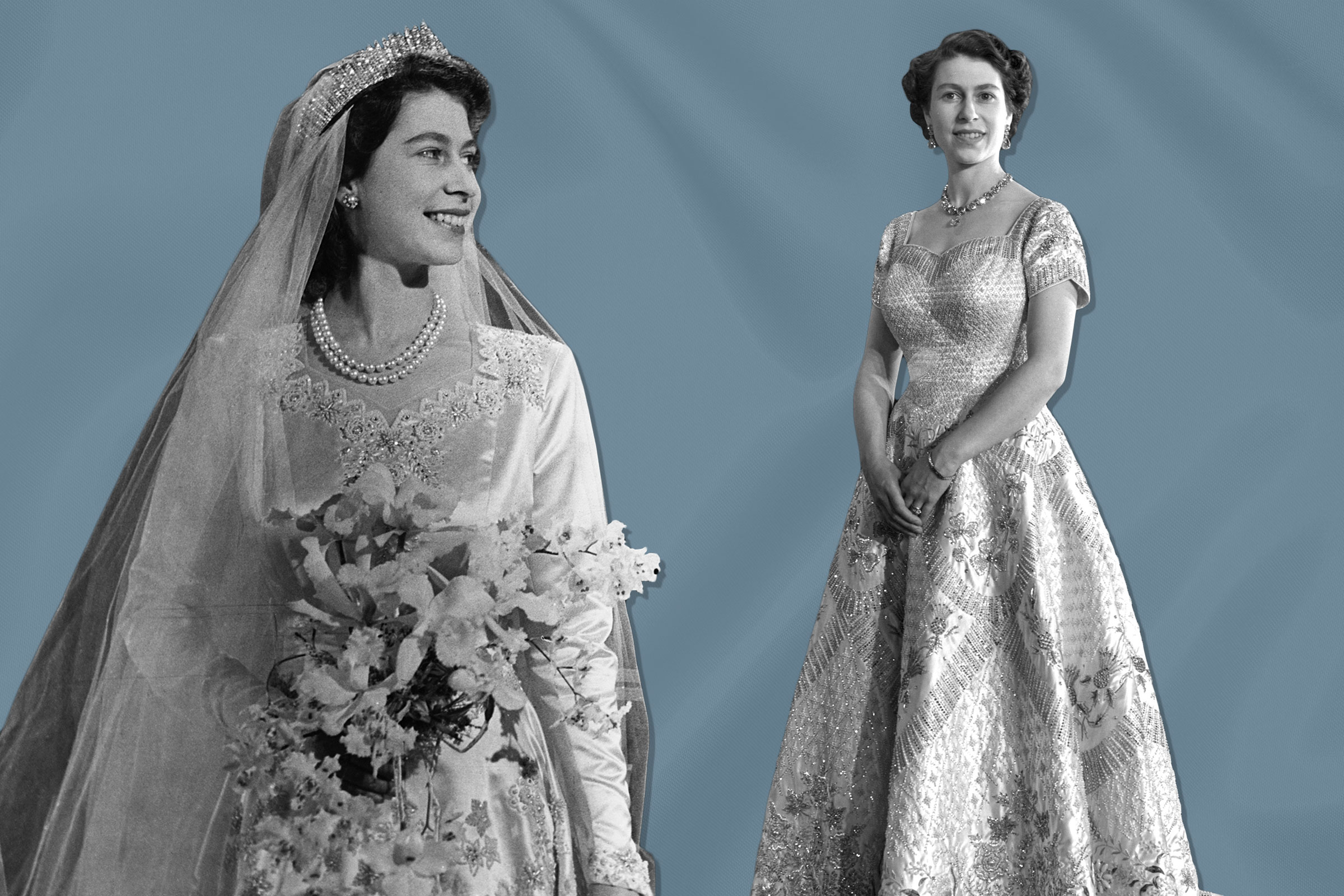
Princess Elizabeth, later Queen Elizabeth II on her wedding day in 1947; Queen Elizabeth II wearing a dress designed by Norman Hartnell for her coronation in 1953
Getty Images (3)
The queen’s wardrobe after her coronation spoke to the deep understanding she had of her role as leader of her country. With that in mind, she favored classic, clean lines and looks that were sleek and elegant, but not necessarily trendy. While her silhouettes and edges may have been on the more conservative side, Elizabeth definitely found other ways to express her sartorial whims, turning to bright colors, vibrant prints and cheeky accessories like hats, gloves and bags.
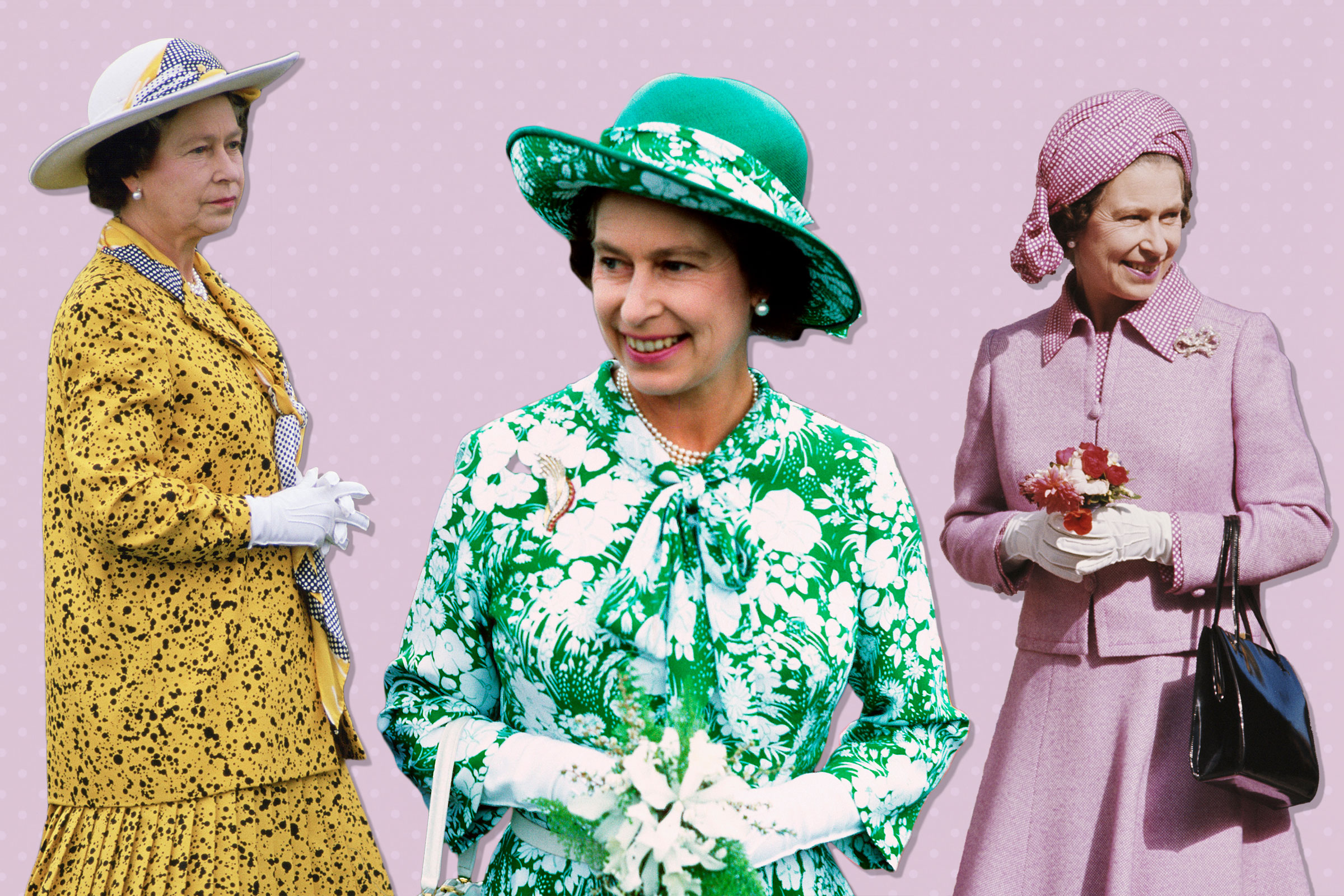
Queen Elizabeth II 1987; 1977 (2)
Tim Graham Photo Library/Getty Images; Anwar Hussein-Getty Images; Serge Lemoine-Getty Images; Getty Images
Hats, an indispensable part of British fashion culture, became a signature statement for the Queen, whose taste in toppers could be so whimsical (as seen with an upturned straw hat adorned with a bunch of red cherries). was smart (like the bold polka-dotted hat she wore with a matching suit with a green skirt.)

Queen Elizabeth ll 1993; 1987; 1998
Photo Library of Tim Graham/Getty Images (2); Anwar Hussein-Getty Images; Getty Images
In many ways, the Queen made a case for the uniform, which, while relying on tried and true elements, can inspire fans to take risks with variables. Take, for example, Elizabeth’s approach to formal wear. The queen liked a dress with long sleeves, often decorated with crystals or sequins. The iteration of this silhouette wasn’t boring when you consider how she accessorized it: the right tiara, sash, gloves and jewels brought fresh life to what could be seen as a fairly traditional royal wardrobe.
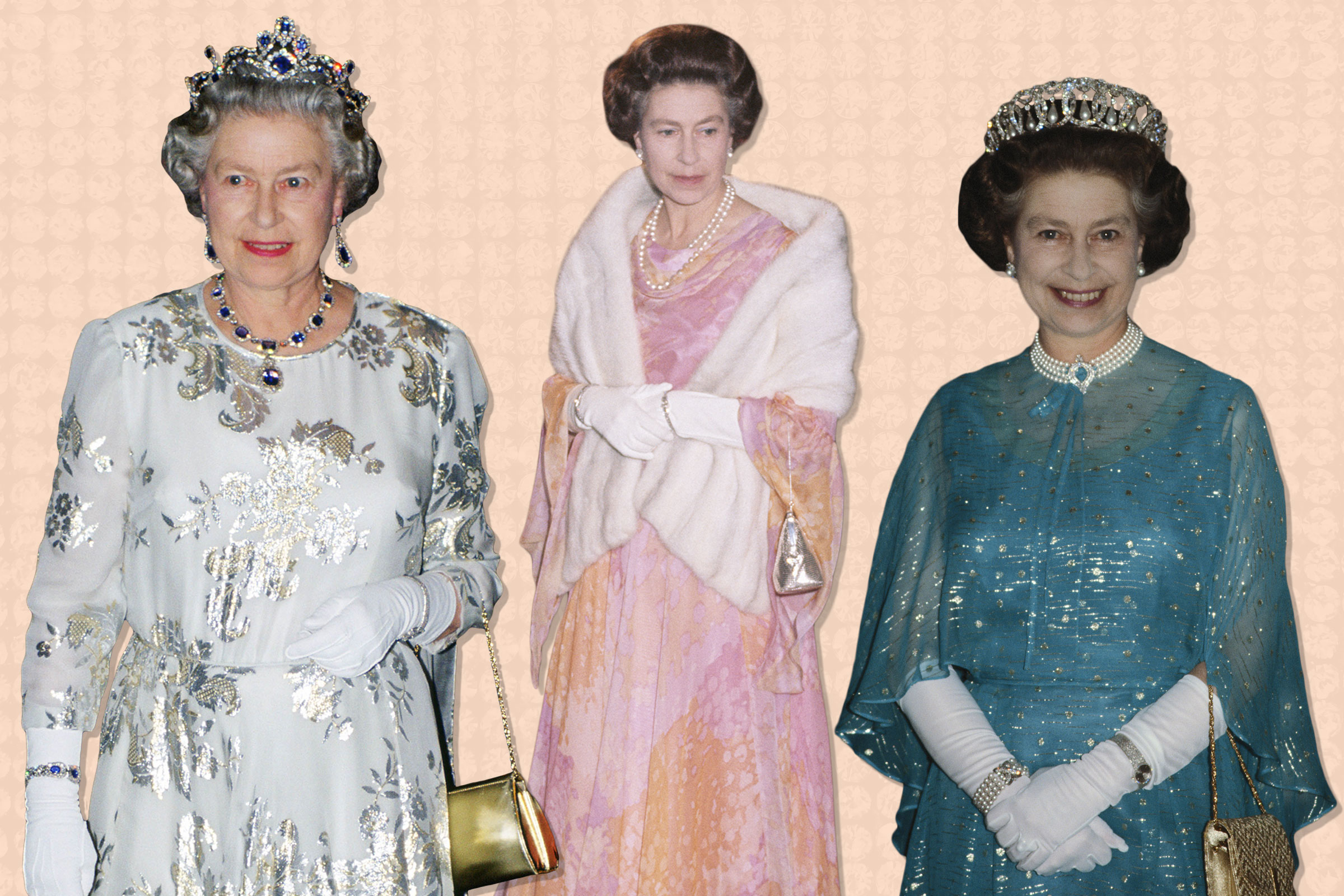
Queen Elizabeth II 1993; 1976; 1982
Photo Library of Tim Graham/Getty Images (2); Serge Lemoine-Getty Images; Getty Images
Likewise, Elizabeth could dress casually with the same effortless elegance. While she was rarely seen wearing pants, a trip to the hospital called for a smart gray suit with slacks. Other off-duty ensembles paid homage to quintessential English leisurewear: Wellington boots, quilted outerwear, headscarves and well-crafted garments in card, wool and checks.
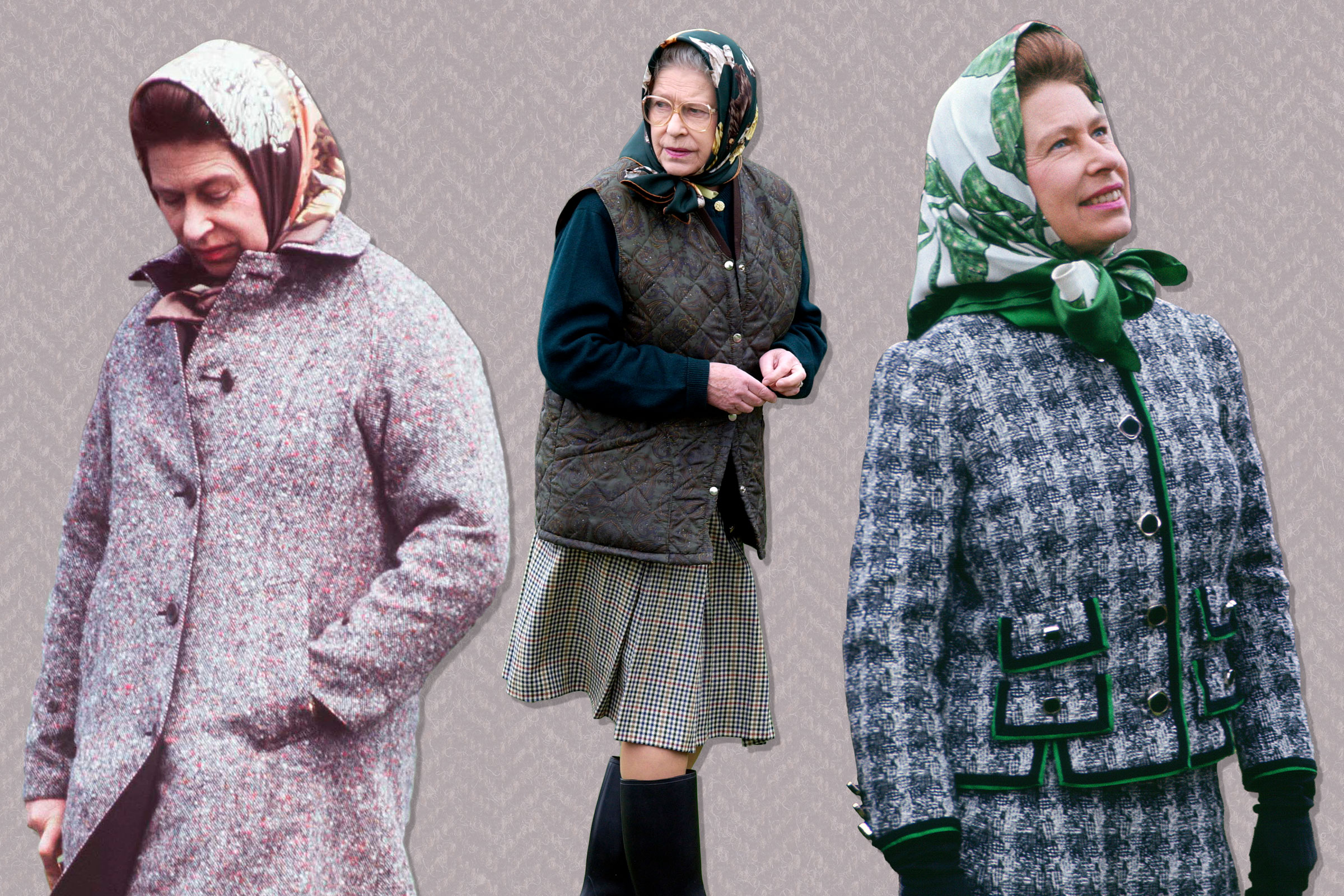
Queen Elizabeth II 1977; 2002; 1980
Photo Library of Tim Graham/Getty Images (3); Getty Images
However, the fashion trends most closely associated with Queen Elizabeth came during the later years of her life, where her penchant for color blocking and monochrome looks made her a true style icon.
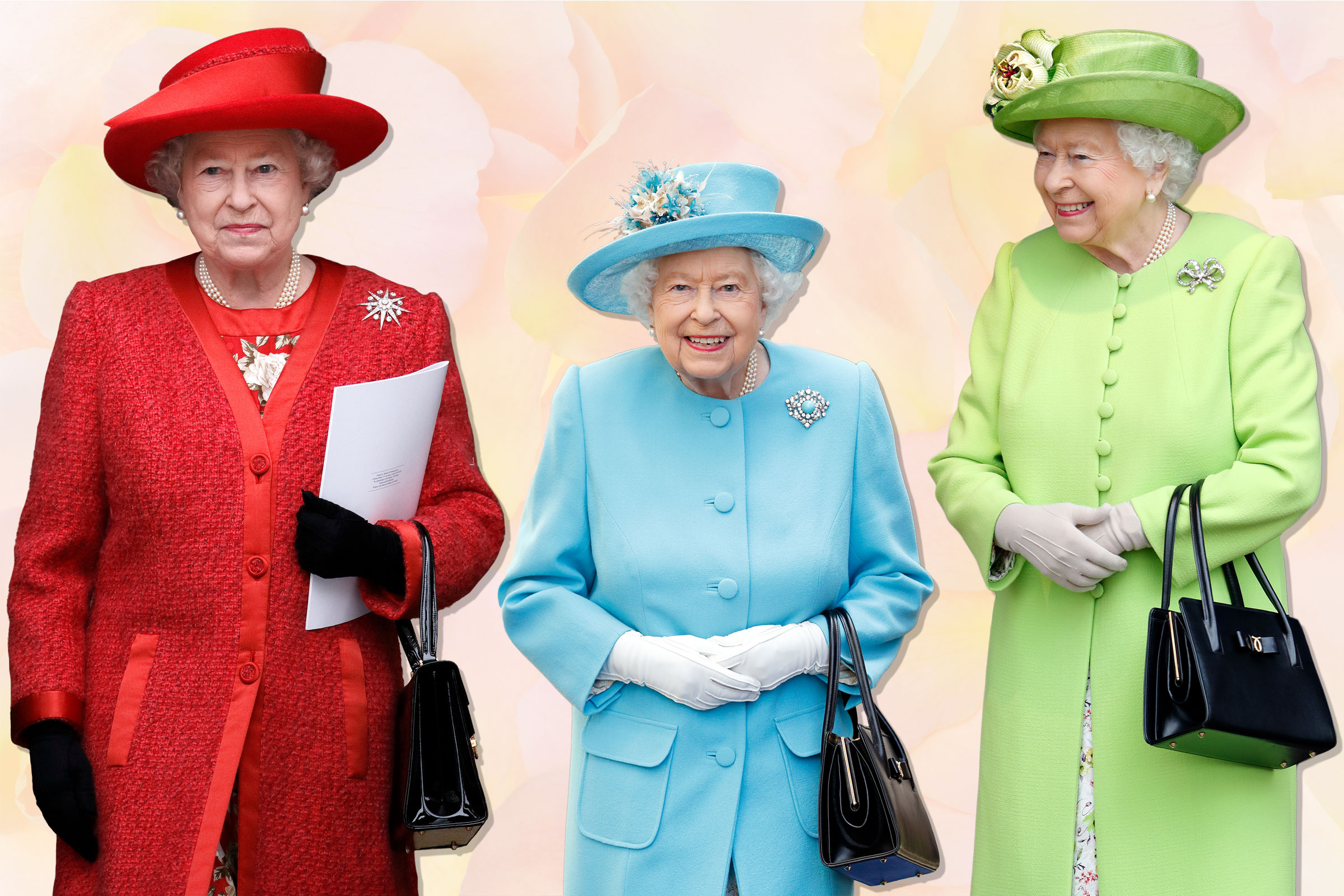
Queen Elizabeth II 2008; 2019; 2018
Max Mumby—Idigo/Getty Images (3); Getty Images
Dressed head-to-toe in one shade it was charming, not flashy, especially when you consider the care Elizabeth took to ensure her accessories matched the look. Just look down to her famous umbrellas, which she carefully matched with her various outfits.
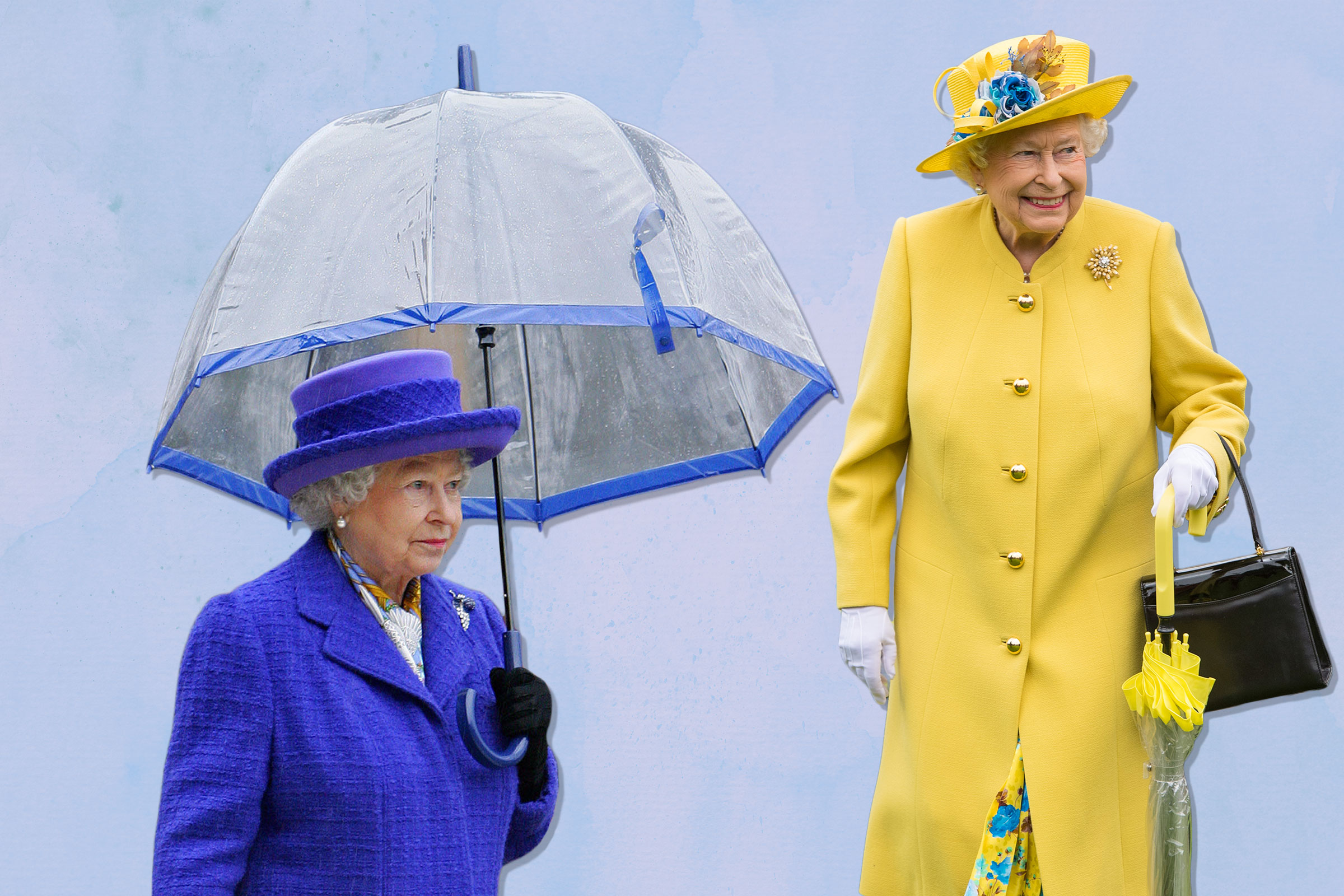
Queen Elizabeth II 2007; 2017
Carl De Souza-AFP/Getty Images; Dominic Lipinski-Getty Images; Getty Images
The queen’s affinity for bright, vibrant colors for her clothing wasn’t just an aesthetic thing either; in the documentary Queen at 90, Sophie, the daughter-in-law of Elizabeth, Countess of Wessex, explains that there was a very pragmatic reason for her bright appearance and it was for the benefit of her subjects. “She has to stand out so people can say, ‘I saw the queen,'” she said. “Remember that when she shows up somewhere, the crowds are two, three, four, 10, 15 deep and somebody wants to be in able to say that he saw part of the Queen’s hat as she passed.”
With her understated elegance and tasteful, thoughtful sartorial decisions, Queen Elizabeth created a fashion framework for modern royalty, balancing strong personal taste with an awareness of her role as a leader.
More must-read stories from TIME




